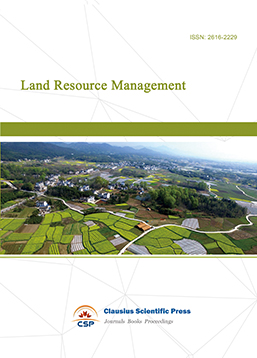Development Strategy of Cultural and Creative Product Design for Generation Z Consumers Based on the Design Participatory Design Philosophy
DOI: 10.23977/tmte.2024.070101 | Downloads: 64 | Views: 345
Author(s)
Yiyang Gao 1
Affiliation(s)
1 School of Design, East China Normal University, Shanghai, 200062, China
Corresponding Author
Yiyang GaoABSTRACT
To enrich the cultural and tourism industry, promoting in-depth innovation and integration of culture and tourism has led to the developing of a series of cultural and creative tourism products with cultural connotations and visual impact. These products aim to attract more consumers to engage in interactive experiences by closely integrating the tourism, cultural and creative industries. Cultural and creative industries produce cultural and tourism integration products. These products' design and development strategy should focus on consumer participatory design. This approach has gained attention in the industry. The market is mainly composed of Generation Z, who are young consumers. Many traditional cultural brands have started considering this generation's consumption needs and behavioral characteristics. They have adjusted their product design, development, and marketing strategies to meet these needs. The cultural and creative product output has also adapted to the market changes and met consumers' needs through continuous innovation. Therefore, when faced with changing aesthetic requirements, the design of cultural and creative products should emphasize their cultural connotation and heritage and focus on product quality and consumers' emotional experience.
KEYWORDS
Generation Z consumers; Cultural and creative products; Participatory design; Product development strategyCITE THIS PAPER
Yiyang Gao, Development Strategy of Cultural and Creative Product Design for Generation Z Consumers Based on the Design Participatory Design Philosophy. Tourism Management and Technology Economy (2024) Vol. 7: 1-7. DOI: http://dx.doi.org/10.23977/tmte.2024.070101.
REFERENCES
[1] Liu M., Wang L., Zhang R. (2023) Influencing factors and attitude-behavior gap causation analysis of ethical consumption behavior of “Generation Z” group. China Youth Research, 10, 55-62.
[2] Liu J., Zhang M., Li Y. (2023) Research on regional cultural and creative product design strategy based on participatory design concept. Footwear Craft and Design, 3(14), 33-35.
[3] Wang X. (2018) Analysis of Museum Cultural and Creative Product Design from the Perspective of Consumer Demand. Heritage identification and appreciation, 08, 76-78.
[4] Wang Q., Lei Q., Kang Z. (2023) Research on the impact of product value perception and consumer demand based on “Forbidden City cultural creation”. Packaging Engineering, 44(14), 224-234.
[5] Ma W. (2021) Research the design and development of creative products from an experience perspective. Imago Cultural Creation, 25, 64-65.
[6] Liu W., Li Z., Guo Q. (2023) Research on the design of cultural and creative products based on the emotional needs of Generation Z--Take Zhao Wangcheng Ruins Park as an example. Packaging Engineering, 1-17.
[7] Xu C. (2022) Visual design research based on participatory design concept. Beauty and era, 12, 25-28.
[8] Shi J., Yu S. (2018) Research on cultural and creative product design under participatory design. Furniture and Interior Decoration, 09, 26-27.
[9] Liang Z., Qiang D., Dai M. (2023) Dilemmas and coping strategies for designing and developing tourism cultural and creative products under the new media perspective. Tourism Overview, 19, 96-98.
[10] Wu S. (2023) An analysis of innovative design of cultural and creative products based on regional culture. Journal of Anhui Electronic Information Vocational and Technical College, 22(01), 95-98.
[11] Wang D. (2023) Research on the design of cultural and creative products with regional characteristics under the perspective of cultural semantics. Design, 36(01), 20-22.
| Downloads: | 5442 |
|---|---|
| Visits: | 152477 |
Sponsors, Associates, and Links
-
Information Systems and Economics

-
Accounting, Auditing and Finance

-
Industrial Engineering and Innovation Management

-
Journal of Computational and Financial Econometrics

-
Financial Engineering and Risk Management

-
Accounting and Corporate Management

-
Social Security and Administration Management

-
Population, Resources & Environmental Economics

-
Statistics & Quantitative Economics

-
Agricultural & Forestry Economics and Management

-
Social Medicine and Health Management

-
Land Resource Management

-
Information, Library and Archival Science

-
Journal of Human Resource Development

-
Manufacturing and Service Operations Management

-
Operational Research and Cybernetics


 Download as PDF
Download as PDF